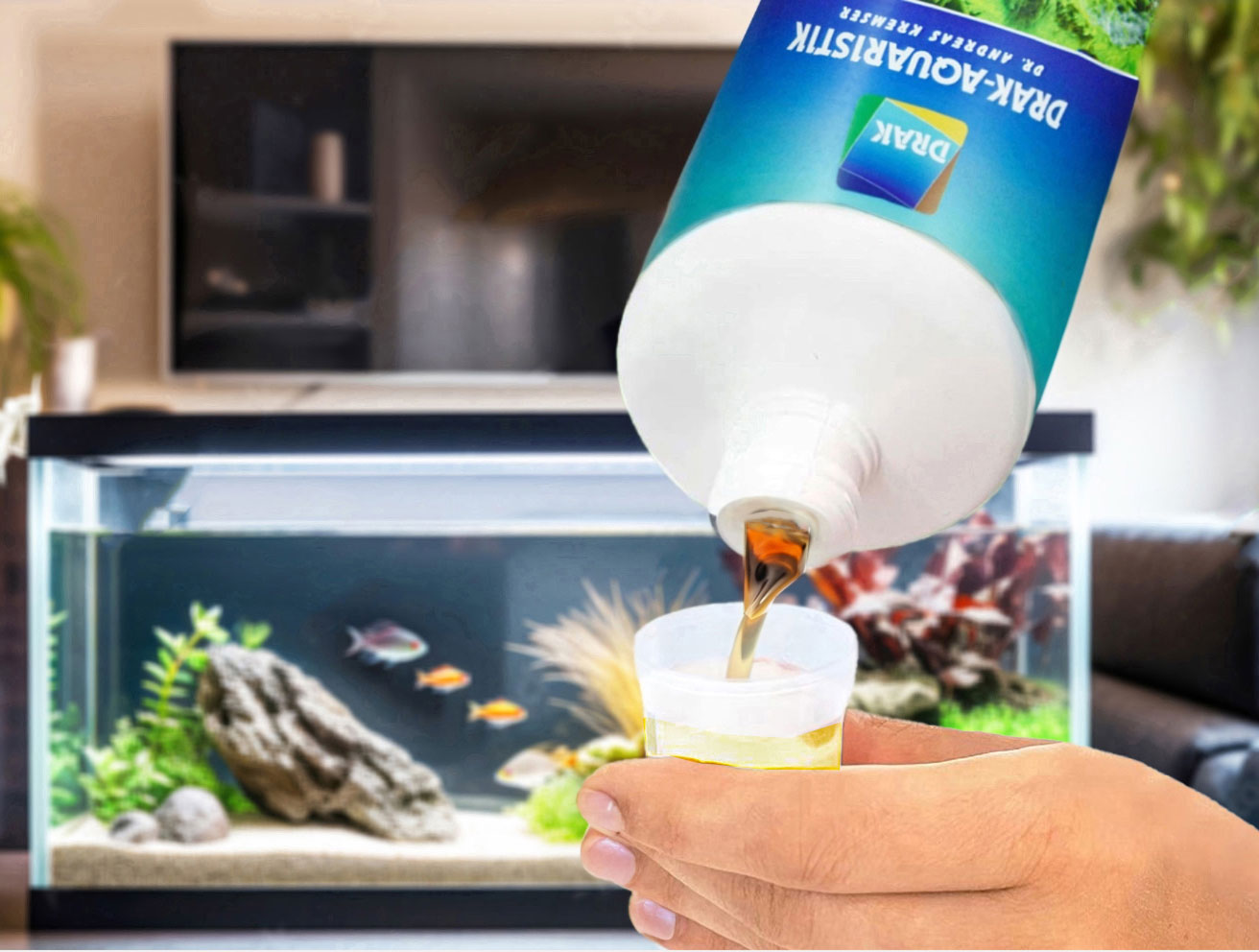Determining the maximum fertiliser concentration in the tank
It can be shown that with regular water changes, even if none of the added nutrients were consumed, at most a certain non-harmful maximum concentration of the fertiliser components would occur.
Blog Wasserwechsel, Geometrische Reihe, Konzentration, Zufuhr
Imagine the following scenario:
You add the dose of fertiliser to the tank that is due before the next water change(+ D). The water change removes W % water including the corresponding amount of fertiliser (leaving 100 % - W % = X %; X % = x; x < 1):
- Remaining amount of fertiliser in the tank = xD
Fertiliser(+ D) is added again until the next water change:
- Amount of fertiliser in the tank = D + xD
After the water change, the
- total amount of fertiliser in the tank = x(D + xD)
Repeat the procedure:
- D + x(D + xD)
- x(D + x(D + xD))
- D + x(D + x(D + xD))
- x(D + x(D + x(D + xD)))
- D + x-(D + x(D + x-(D + xD)))
- x(D + x(D + x(D + x(D + xD))))
- D + x(D + x(D + x(D + x(D + xD))))
- etc. etc. ad infinitum
Multiply out:
D + Dx + Dx2 + Dx3 + Dx4 + Dx5 + .... = D(x + x2 + x3 + x4 + x5 + ....)
For this special infinite series ("geometric series"), a closed, discrete solution exists for x < 1:
L = 1 / (1 - x); here: D / (1 - x)
With 25% water change (x = 0.75), L = 4.
This means that the concentration of a substance in the tank can increase to a maximum of four times the value of the added concentration between two water changes (without other consumption, e.g. by the aquatic plants or chemical precipitation processes).
For example, if you add a quantity of fertiliser per week that corresponds to an iron content of 0.05 mg/l, the iron content could rise to a maximum of 0.2 mg/l with 25% water changes per week.
The maximum concentration for other additions and water changes is then calculated in the same way.


